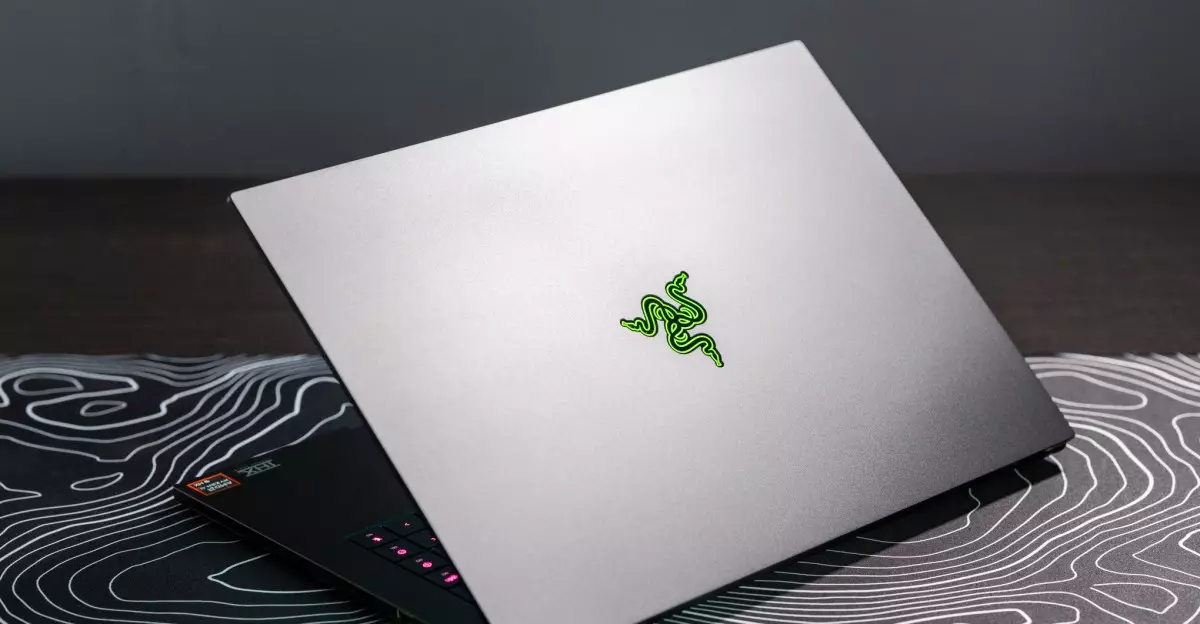The Razer Blade 16 enters the competitive landscape of gaming laptops with a bold new design that returns to a thinner and lighter profile, making it an appealing alternative to other high-end laptops, notably the MacBook Pro. At first glance, the aesthetic is undeniably sleek—reminiscent of premium devices while offering the performance needed for intensive gaming. This balance of form and function seems to have been carefully crafted, appealing to both gamers seeking high specifications and professionals who require a device for creative work. However, while the lightweight and refined design is commendable, it raises questions about the potential trade-offs in thermal management and battery life.
With a starting price of $4,499.99 for the top-tier model featuring the newly launched Nvidia RTX 5090 GPU, the Blade 16 positions itself as a premium option in the market. Yet, one must ponder whether the associated price truly reflects its value, particularly given the myriad of functionality that the device aims to consolidate.
The Display: A Visual Feast
One of the standout features of the Razer Blade 16 is its stunning 16-inch OLED display, boasting a 2560 x 1600 resolution and a breathtaking 240Hz refresh rate. For gaming enthusiasts, this translates to immersive environments where every graphical nuance is beautifully rendered. The screen’s quality makes it particularly suitable not just for gaming, but also for video editing and creative tasks that demand precision.
However, it is the usability of the keyboard that seems to detract from the otherwise stellar user experience. While spacious and primarily functional, the introduction of a new column of macro keys may frustrate users. The inconsistency in arrow key arrangement is a glaring oversight—one that could have easily been remedied by adhering to a more traditional layout. This kind of design misstep can be disconcerting, particularly for professionals who rely on efficiency throughout their workflow.
Performance Under Pressure
Equipped with cutting-edge Nvidia RTX 5090 technology, the Blade 16 promises enhanced performance, particularly with features like DLSS and frame generation. Early impressions suggest a robust capability for handling modern titles while maintaining high FPS rates, creating an exceptional gaming experience. The graphics card’s efficiency claims—alleging a 20% improvement over its predecessor, the 4090—are undoubtedly exciting; however, skepticism lingers due to performance fluctuations experienced during everyday usage.
The laptop’s ability to sustain long battery life appears inconsistent, particularly when running less demanding tasks. While other laptops in the same bracket can deliver over eight hours of consistent use, the Blade 16 struggles to reach even five and a half hours. The disparity raises concerns about the optimization of its AMD Ryzen AI 9 HX 370 “Strix Point” CPU in conjunction with the integrated graphics. Whether this is a configuration issue or inherent to the laptop remains to be seen, but it’s an unsettling challenge that could affect productivity and overall satisfaction.
Pricing vs. Value Proposition
At a staggering price point, the Blade 16 enters a market where consumers are increasingly value-conscious. Within the same budget, one could acquire a MacBook Pro renowned for handling creative workflows, coupled with a capable gaming laptop or desktop for dedicated gaming tasks. This makes the all-in-one proposition of the Razer Blade 16 potentially appealing, yet challenging to justify when weighed against performance issues that arise during everyday use.
While a singular device sounds practical, having to navigate crashing issues or frequent recharging could render the allure of an all-in-one device moot. There’s a sentiment that for $4,499.99, the experience should not only meet but exceed the expectations set by competitors. Users may find themselves in a quandary as they navigate their options in a saturated market, pondering whether any laptop can truly justify such a high cost.
A Beautiful Yet Flawed Experience
Despite its many merits, the Razer Blade 16 exemplifies a quintessential dilemma of modern technology—it is a beautifully crafted device that may not wholly deliver on its promises. The thrill of owning a laptop that doubles as a powerhouse for both gaming and productivity is tempered by lingering technical flaws that compromise its functionality. Nevertheless, for those who prioritize aesthetics and gaming capability, the Blade 16 can still represent a solid investment—but only after rigorous testing and troubleshooting is undertaken to address its apparent shortcomings. Ultimately, the Razer Blade 16 stands as a testament to the delicate balance between performance and design, leaving potential buyers to weigh the allure against practical reality.

